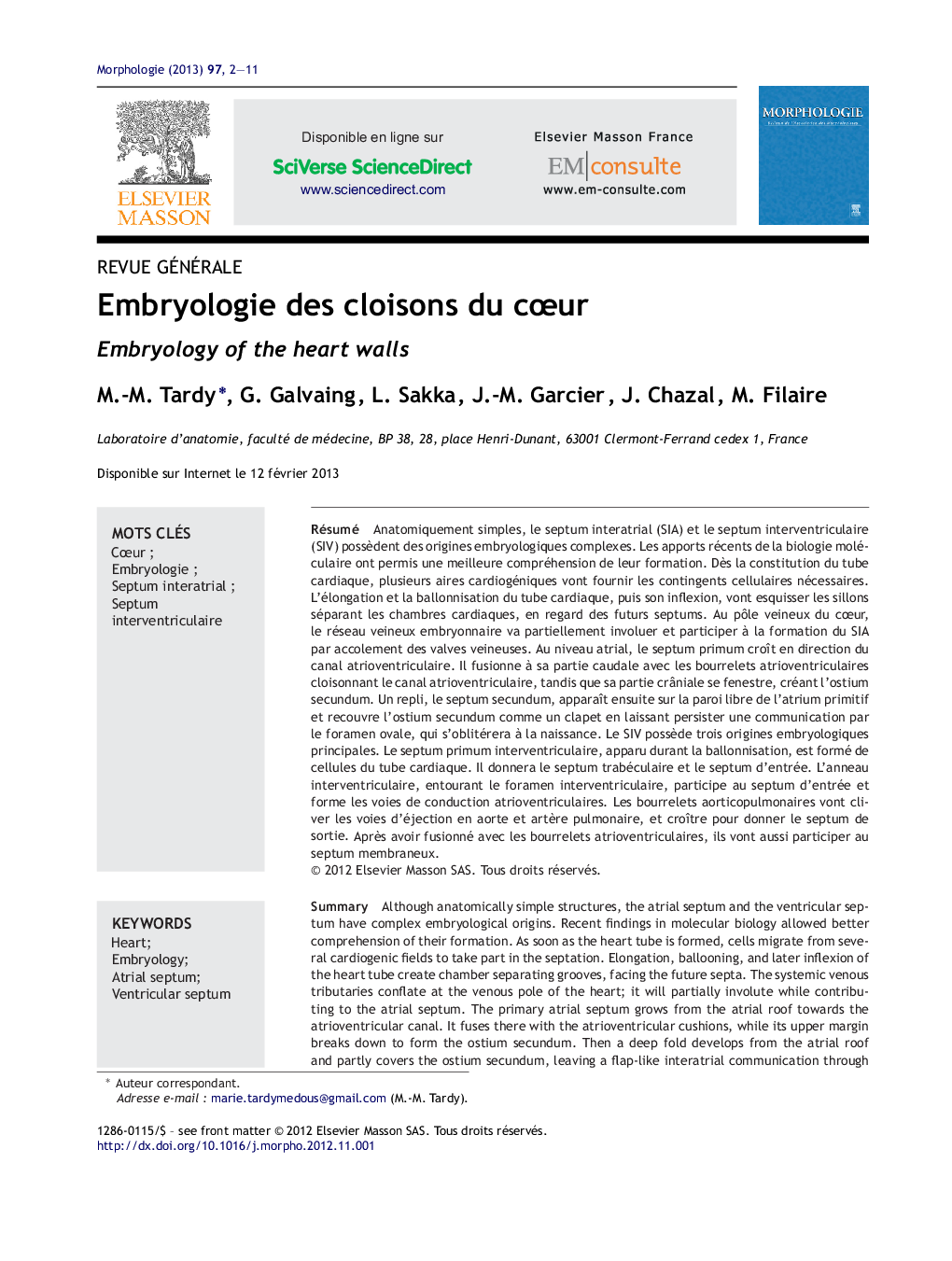| Article ID | Journal | Published Year | Pages | File Type |
|---|---|---|---|---|
| 2059088 | Morphologie | 2013 | 10 Pages |
Abstract
Although anatomically simple structures, the atrial septum and the ventricular septum have complex embryological origins. Recent findings in molecular biology allowed better comprehension of their formation. As soon as the heart tube is formed, cells migrate from several cardiogenic fields to take part in the septation. Elongation, ballooning, and later inflexion of the heart tube create chamber separating grooves, facing the future septa. The systemic venous tributaries conflate at the venous pole of the heart; it will partially involute while contributing to the atrial septum. The primary atrial septum grows from the atrial roof towards the atrioventricular canal. It fuses there with the atrioventricular cushions, while its upper margin breaks down to form the ostium secundum. Then a deep fold develops from the atrial roof and partly covers the ostium secundum, leaving a flap-like interatrial communication through the oval foramen. It will close at birth. The interventricular septum has three embryological origins. The ventricular septum primum, created during the ballooning process, origins from the primary heart tube. It will form the trabecular septum and the inlet septum. The interventricular ring, surrounding the interventricular foramen, will participate in the inlet septum and also form the atrioventricular conduction axis. The outflow cushions will separate the outflow tract in the aorta and pulmonary artery, and grow to create the outlet septum. After merging with the atrioventricular cushions, they will also be part of the membranous septum.
Related Topics
Life Sciences
Biochemistry, Genetics and Molecular Biology
Biochemistry, Genetics and Molecular Biology (General)
Authors
M.-M. Tardy, G. Galvaing, L. Sakka, J.-M. Garcier, J. Chazal, M. Filaire,
